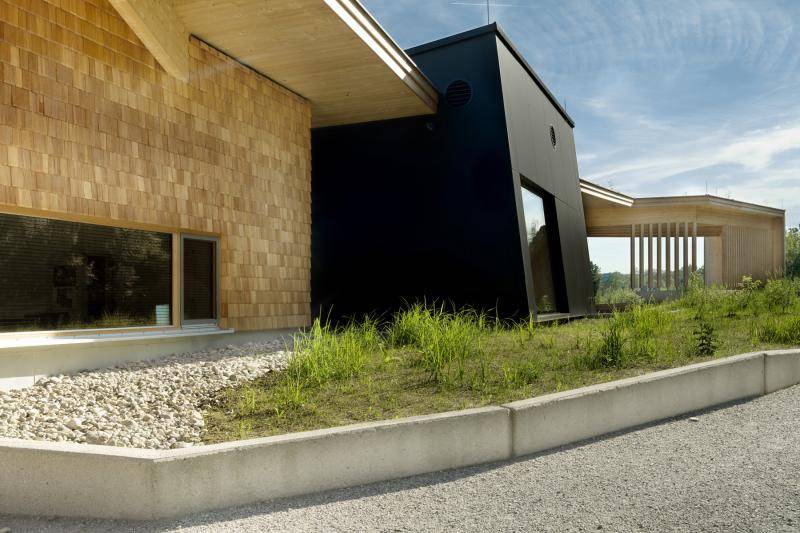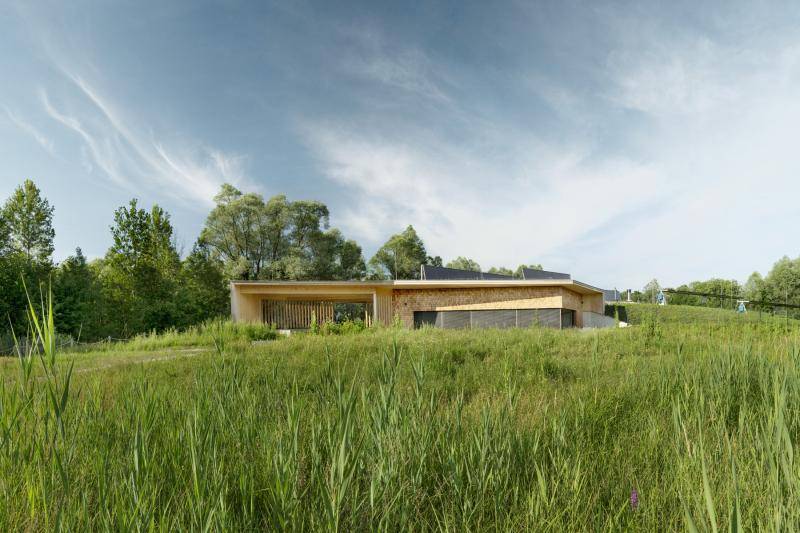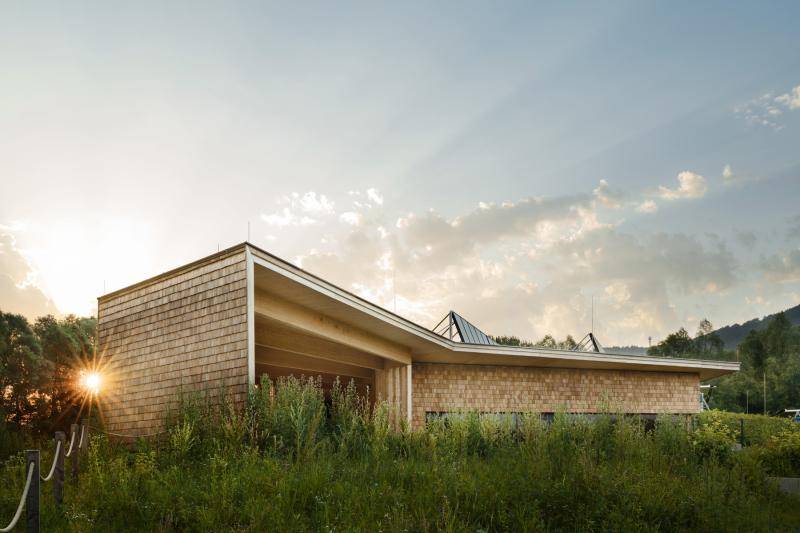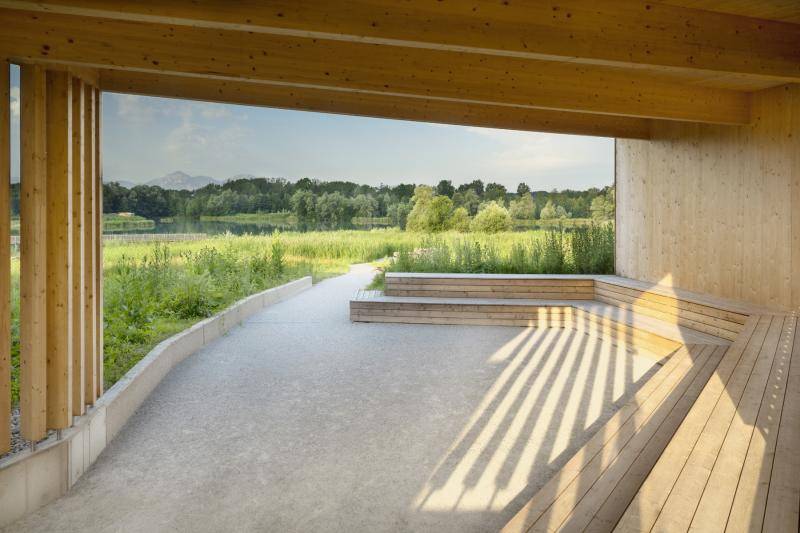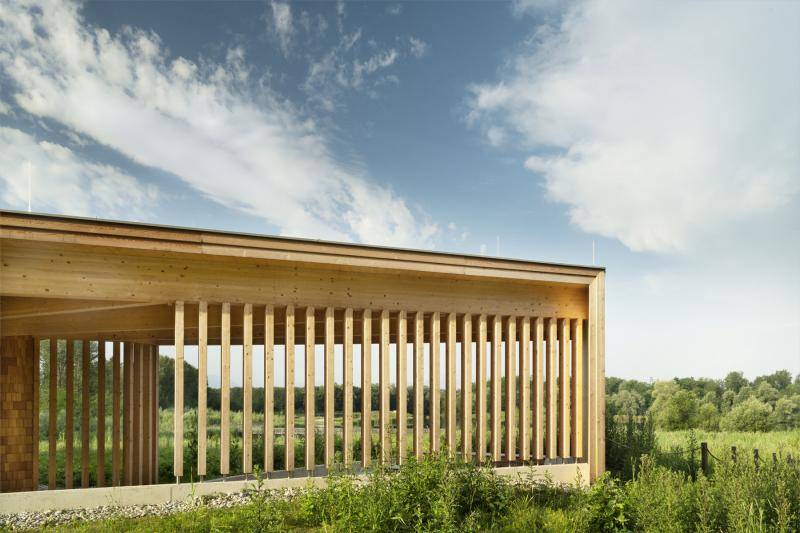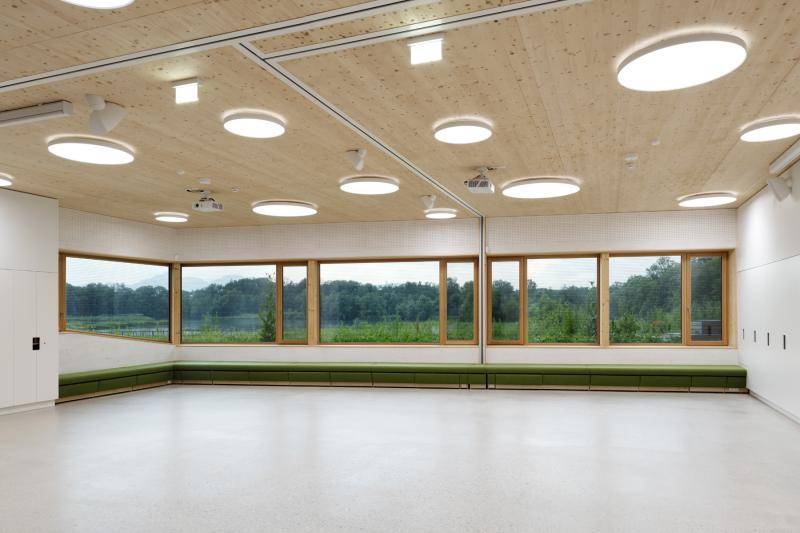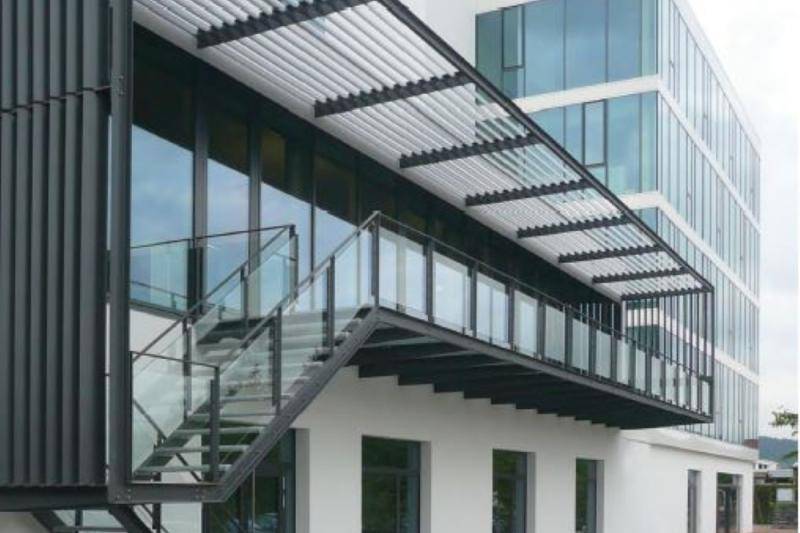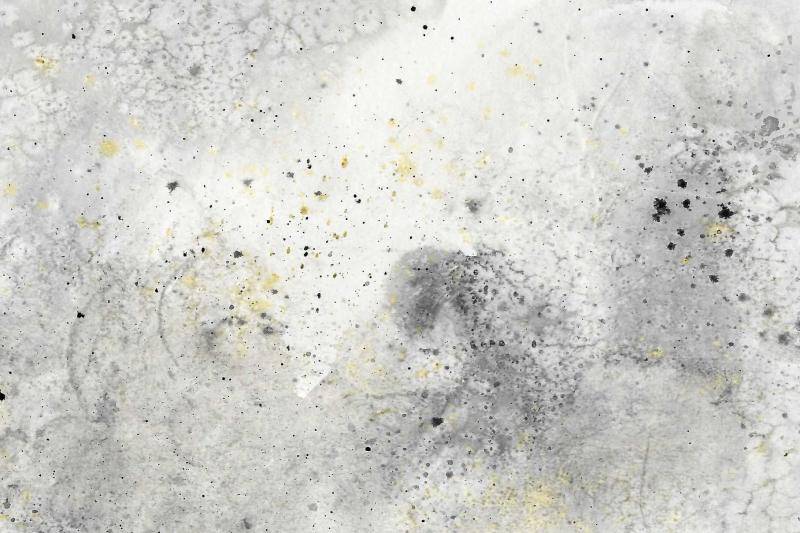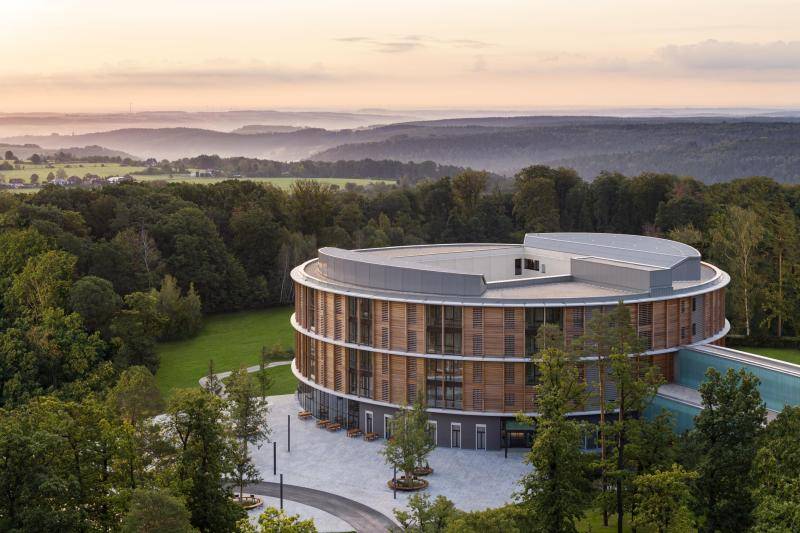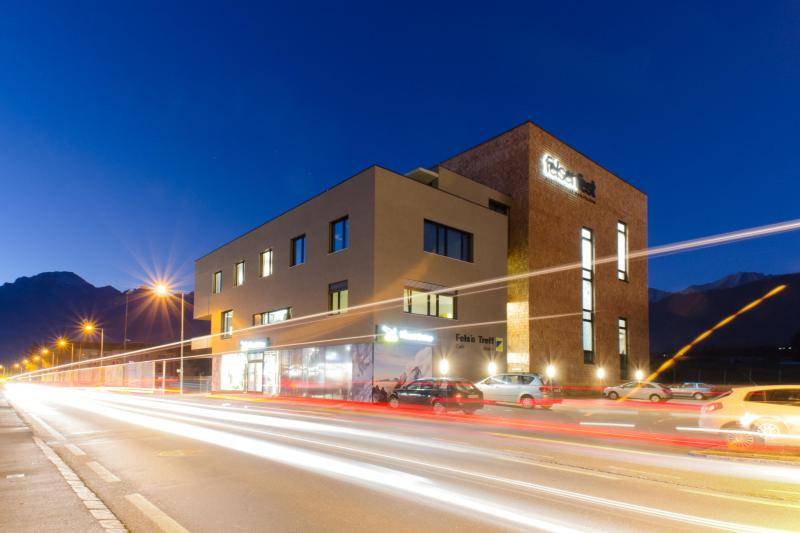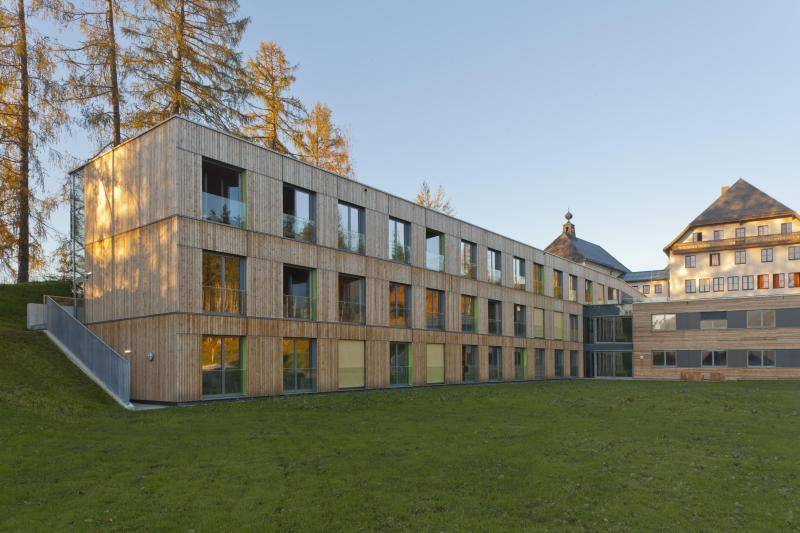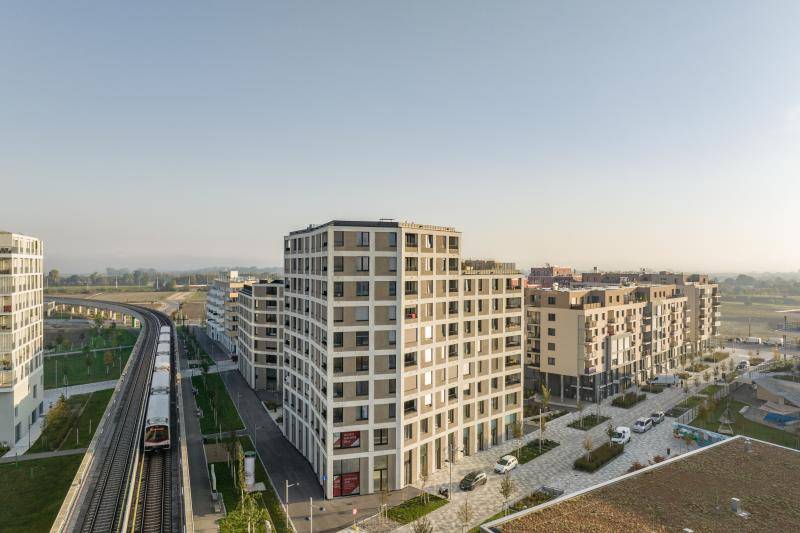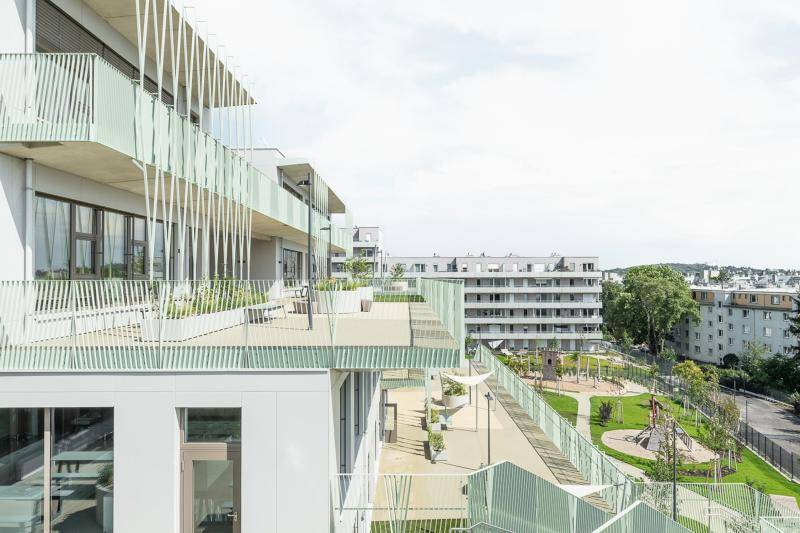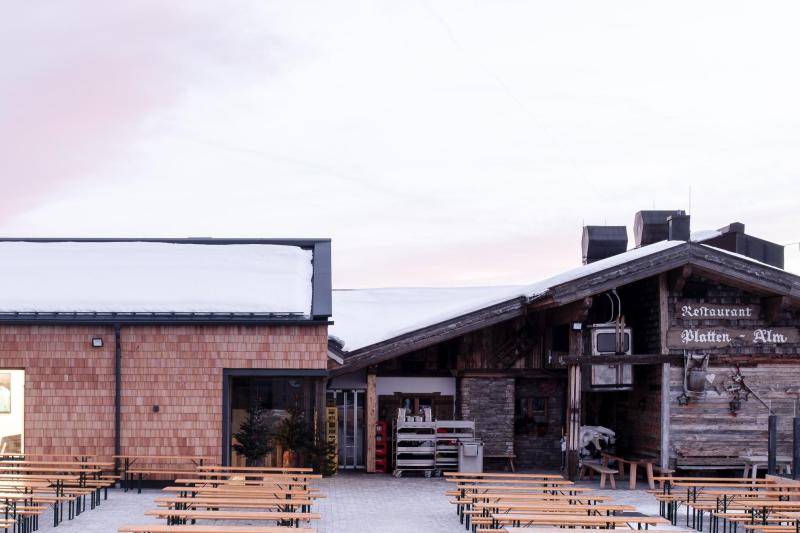Auenwerkstatt
The Auenwerkstatt is a small school building in the middle of the Salzachauen: an all-wood building, completely self-sufficient, powered purely by the sun, and it uses its wood mass as an energy store for heating and cooling. The Auenwerkstatt is thus the first solar self-sufficient municipal building in Europe.
Land Salzburg
2021
Gross floor area: 400 m²
Solar: 65 m² thermal solar collectors
PV: 56 Photovoltaic panels
Storage: 192 kWh by recyclable lead,copper,carbon batteries
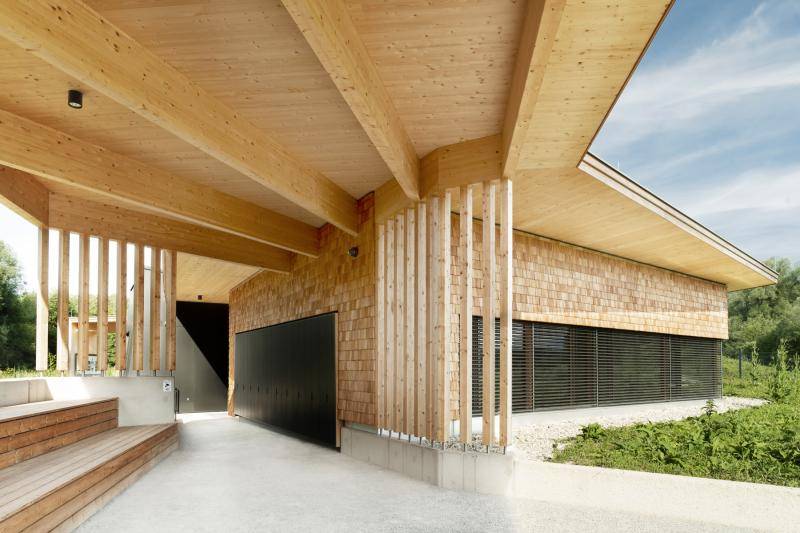
The Auenwerkstatt had to be established in the Natura 2000 site Salzachauen: Here, one of the most species-rich ecosystems in Salzburg is preserved on more than 1,100 ha. Together with the adjacent Natura 2000 areas in Upper Austria and Bavaria, it forms a network of protected areas covering about 70 km², one of the most species-rich natural areas in the northern foothills of the Alps.
According to the design of architect Dipl. Ing. Peter Horner, the building of the Auenwerkstatt was partially 'stamped' into the natural terrain - the Auenwerkstatt never rises as a 'crown of creation' above the surrounding nature but is part of it.
The building is completely self-sufficient and in normal operation is powered purely by the sun (heating, cooling, electrics, ventilation, fresh water and waste water).
All components not in contact with the ground are made of solid wood, the exterior walls even without further insulation. Solar heat is stored by component activation not only in the concrete floor slab but also in the solid wood ceiling. Active cooling is also provided directly through the solid wood ceiling via a ground collector.
The Auenwerkstatt is designed as a single-story building in hybrid construction - all components in contact with the ground in reinforced concrete, the exterior walls and ceilings as well as the partition walls were constructed in glue-free solid wood (Thoma system). The solid wood ceiling is also component-activated - and on the one hand can store solar heat and thus serve as a heat reservoir - and on the other hand can also be actively cooled via a ground collector (as the first municipal building in Europe). This completely eliminates the need for 'classic' air conditioning.
The combination of wood-based materials, the activation of these components for heat and coolness via component activation enables a quality of the indoor climate that is noticeably above the level of conventional buildings - which has already been confirmed by visitors and users.
(Text: Architect Peter Horner; in shortened form)
